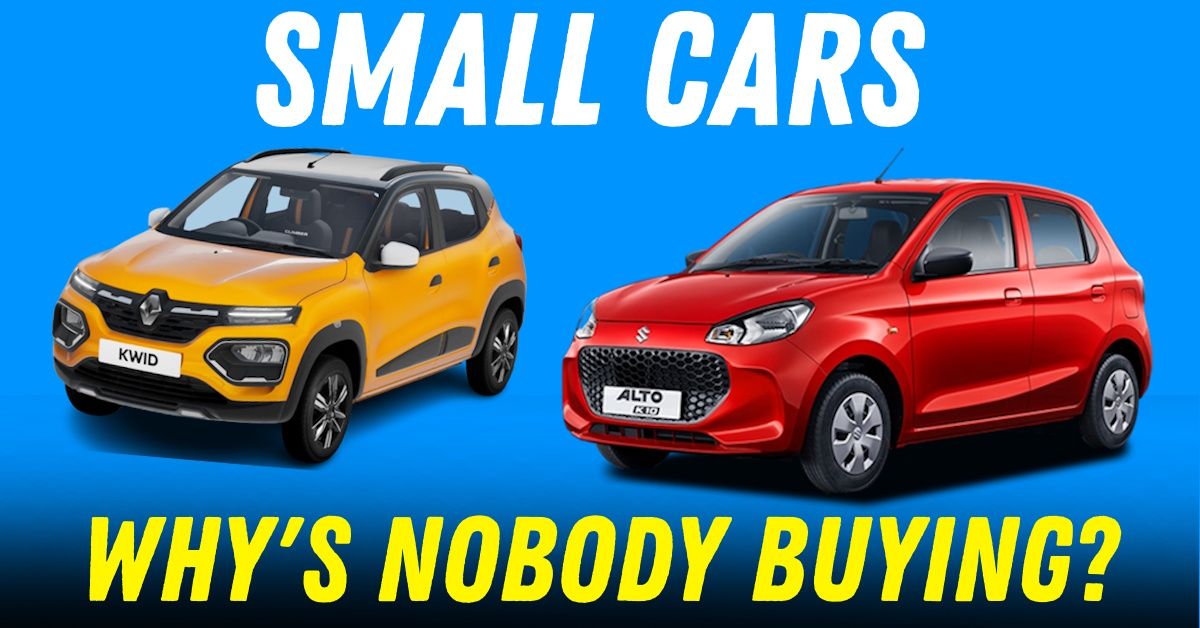Are Basic, Entry-Level Small Cars Dead?


A strange contradiction defines India’s small car market today. In December 2024, Maruti Suzuki’s Alto and S-Presso celebrated a 190% sales surge, only to see numbers crash again by April 2025. This rollercoaster reveals a deeper truth: once-dominant entry-level cars now cling to relevance in a market seduced by SUVs. Their survival hinges on navigating an obstacle course of economic pressures, shifting aspirations, and clever reinvention.
Last December’s sales spike for Maruti’s mini cars—7,418 units versus 2,557 in 2023—initially suggested revival. Dig deeper, however, and the picture darkens. April-December 2024 saw 89,642 mini car sales, down 10% from 99,634 in the same 2023 period. The December surge likely reflected year-end discounts and inventory clearance rather than sustainable demand, according to industry analysts.
This volatility exposes the segment’s fragility. The S-Presso’s sales swung wildly: 2,283 units in November 2024, just 8 in December, then 2,895 by January. Similarly, the Celerio plummeted from 4,226 units in February 2025 to 1,474 in April. Such instability deters manufacturers from long-term investments, creating a self-fulfilling cycle of neglect.
Entry-level vehicles face an identity crisis. Designed for budget-conscious buyers, they’ve become unaffordable for their core audience—first-time owners and young professionals. The Alto K10 now starts at ₹3.99 lakh, up 17% from 2019. Meanwhile, entry-level salaries in sectors like manufacturing remain under ₹2.5 lakh annually.
As Shailesh Chandra, MD of Tata Motors, noted in a recent NDTV Profit interview, the average selling price of cars has nearly doubled since the pandemic, reflecting a broader trend of premiumisation that disadvantages entry-level buyers.
Regulations accelerated this pricing mismatch. Mandatory dual airbags, anti-lock braking systems, and stricter emission norms pushed production costs up by 10-15%. With only four models left, Alto K10, S-Presso, Renault Kwid, Celerio, the segment offers scant choice. Hyundai’s 2020 exit, citing poor margins, foreshadowed this crunch.
SUVs now command half of passenger vehicle sales, reshaping consumer psychology. Buyers perceive SUVs as safer, more aspirational, and better value despite higher prices. The Kwid (₹4.7-6.45 lakh) competes directly with compact SUVs like the Tata Punch (₹6-10.6 lakh), blurring price boundaries.
As Chandra pointed out, Tata Motors is strategically positioned to capitalize on demand across various body types, including SUVs and premium hatchbacks like the Altroz, further intensifying competition for entry-level cars.
Young urban Indians drive this shift. Owning an SUV feels like an achievement. Why settle for a basic hatchback when you can stretch your budget for something that impresses neighbours? This mindset has left entry-level cars stranded between practicality and prestige.
Amid the gloom, two trends offer hope. First, CNG variants now account for 30% of Maruti’s mini car sales, appealing to cost-conscious drivers facing volatile petrol prices. The S-Presso CNG delivers 24.76 km/kg, slashing running costs.
Renault’s Kwid also adapts, introducing a 999cc turbo-petrol engine for better performance. These innovations suggest small cars could rebrand as smart urban mobility solutions rather than mere budget options.
Entry-level cars aren’t dead but must evolve. Maruti’s RC Bhargava acknowledges, “We can’t abandon millions needing affordable transport.” Strategies taking shape include:
• Micro-SUV Styling: The S-Presso’s SUV-like design cues (raised stance, cladding) attract buyers wanting a premium look at hatchback prices.
• Feature Upgrades: Even basic models now offer touchscreens and smartphone connectivity, narrowing the tech gap with pricier cars.
• Rural Focus: With 65% of Alto sales coming from non-urban areas, manufacturers are strengthening rural dealer networks.
Yet challenges persist. Rising steel prices and potential emission norm tweaks could push costs higher. Meanwhile, used cars and electric two-wheelers siphon off budget buyers.
The era of entry-level cars dominating sales charts is over. However, they’ll likely carve a niche among pragmatic urban commuters and price-sensitive rural buyers. Their future hinges on balancing regulatory compliance with aggressive pricing, a tough but not impossible task.
As the Kwid’s steady 500-700 monthly sales show, demand exists but demands constant reinvention. In India’s complex automotive landscape, small cars are learning the art of quiet resilience, adapting to survive rather than dominate.